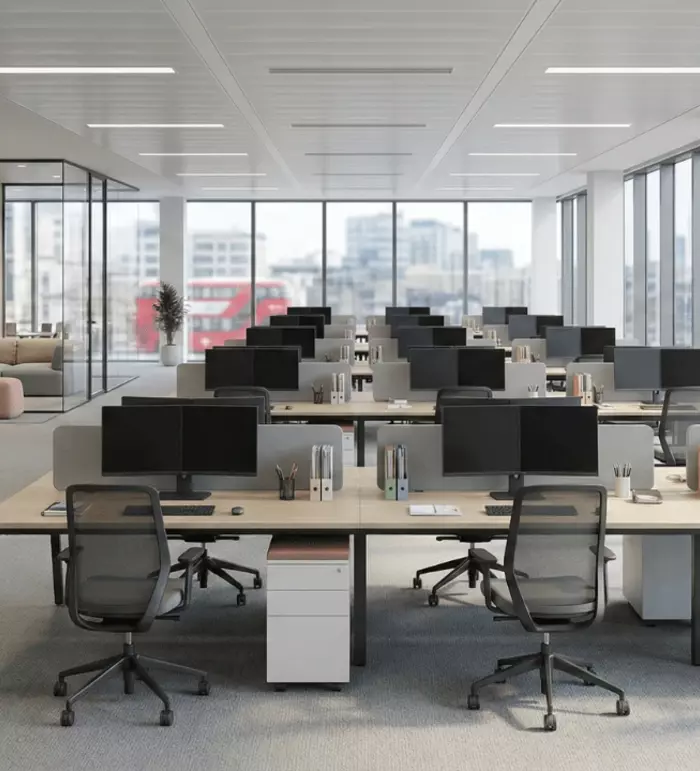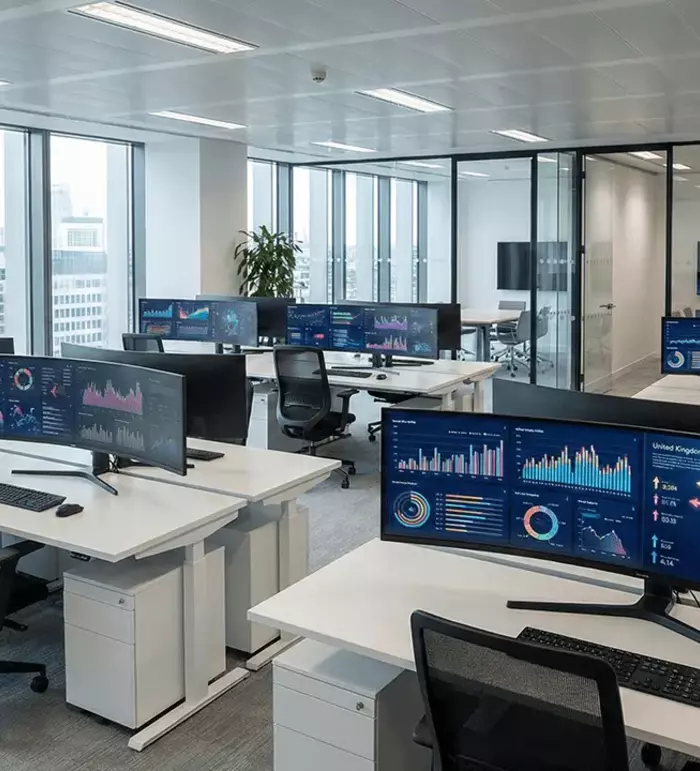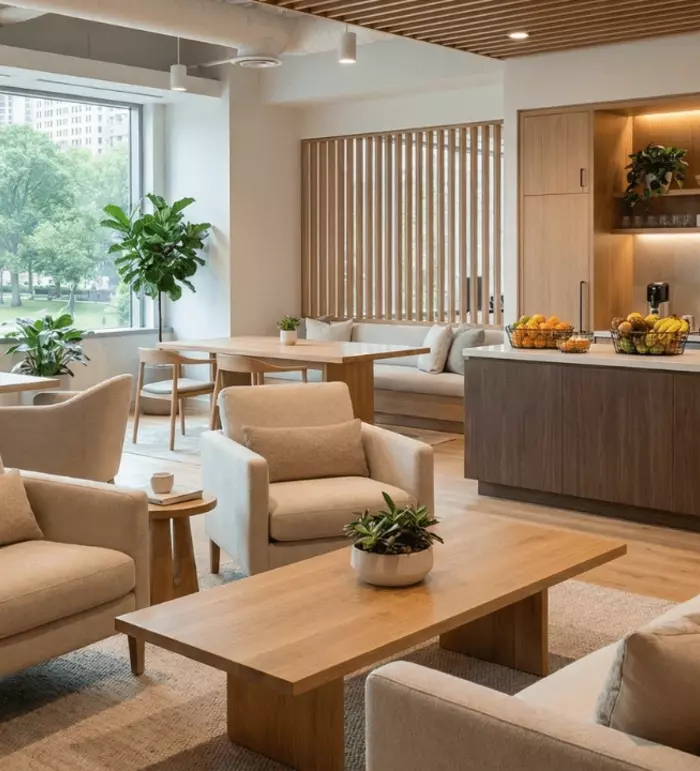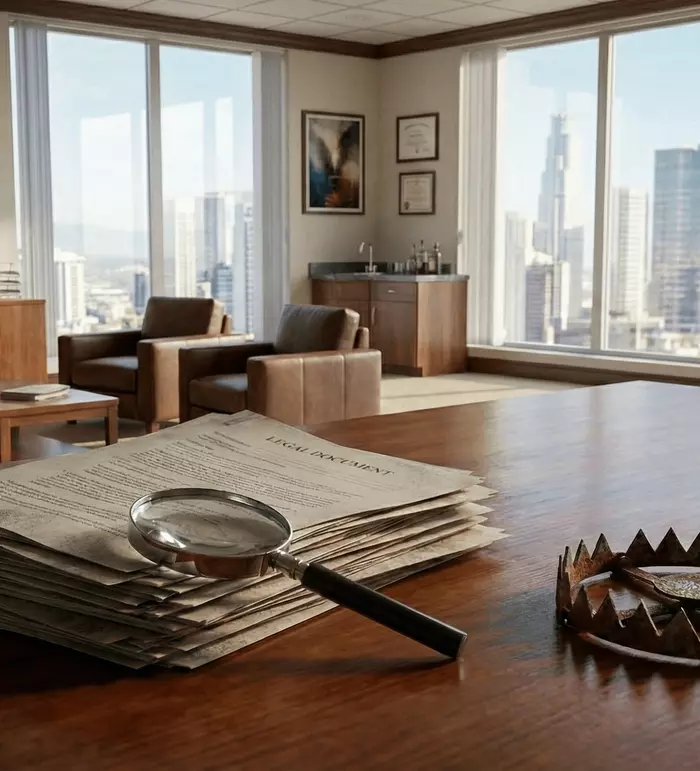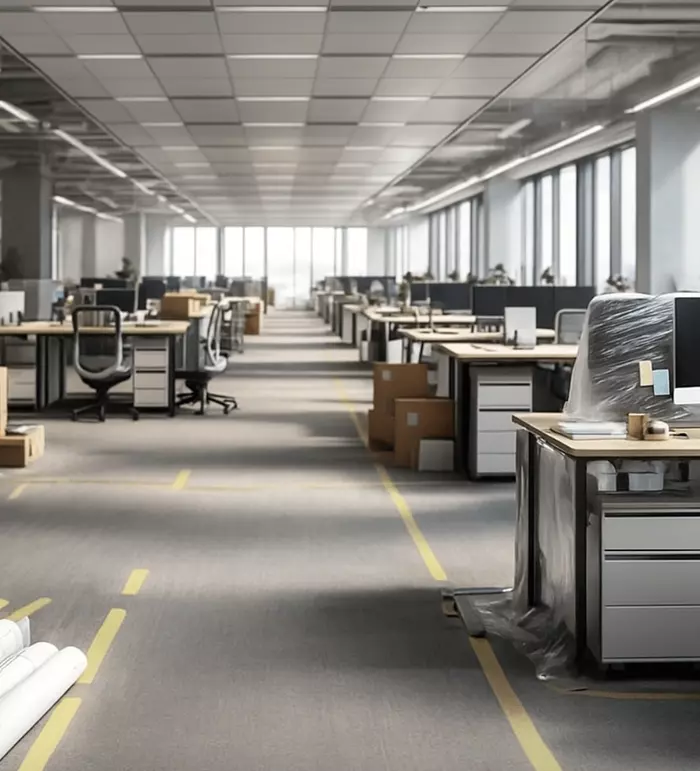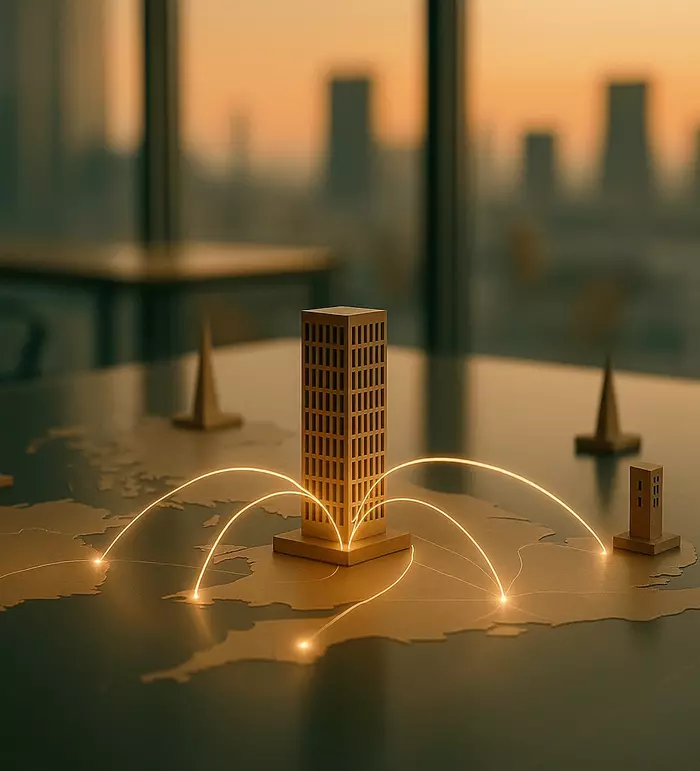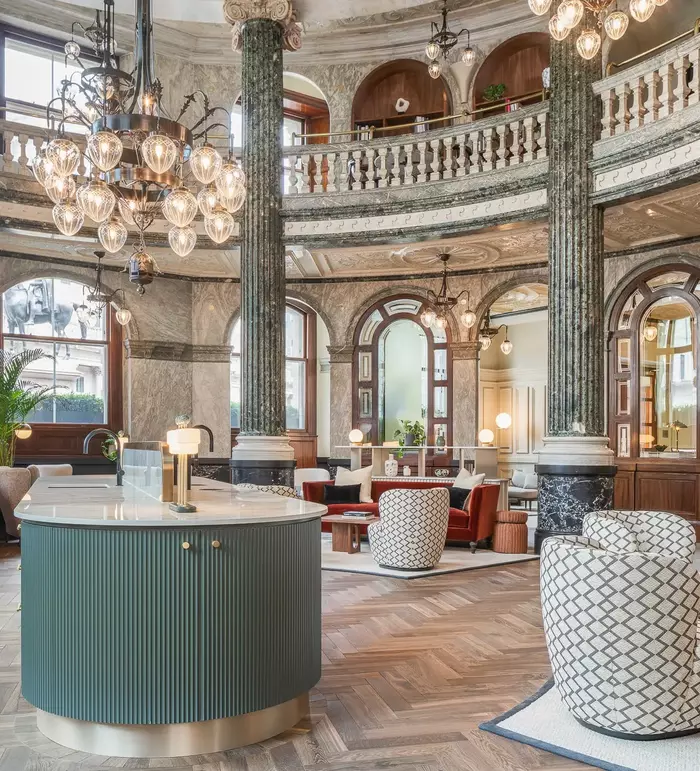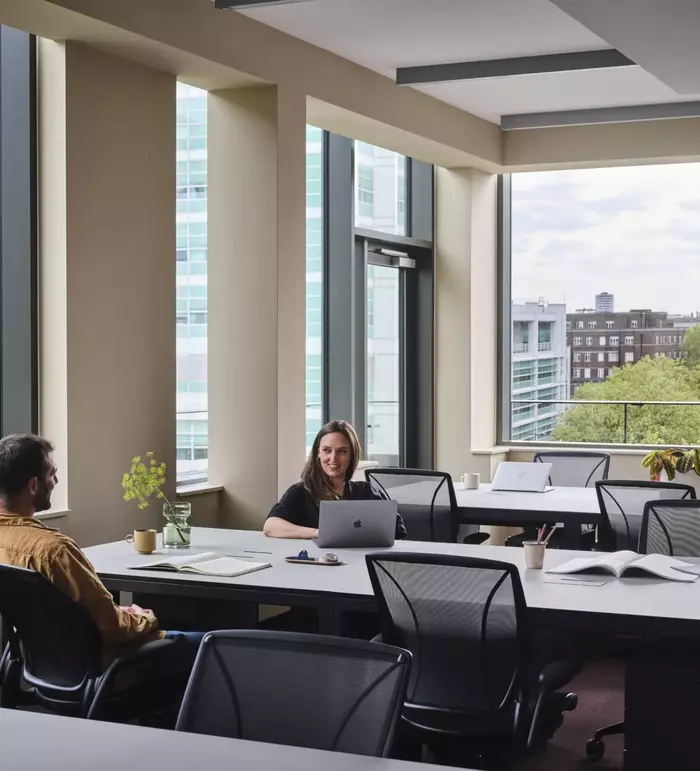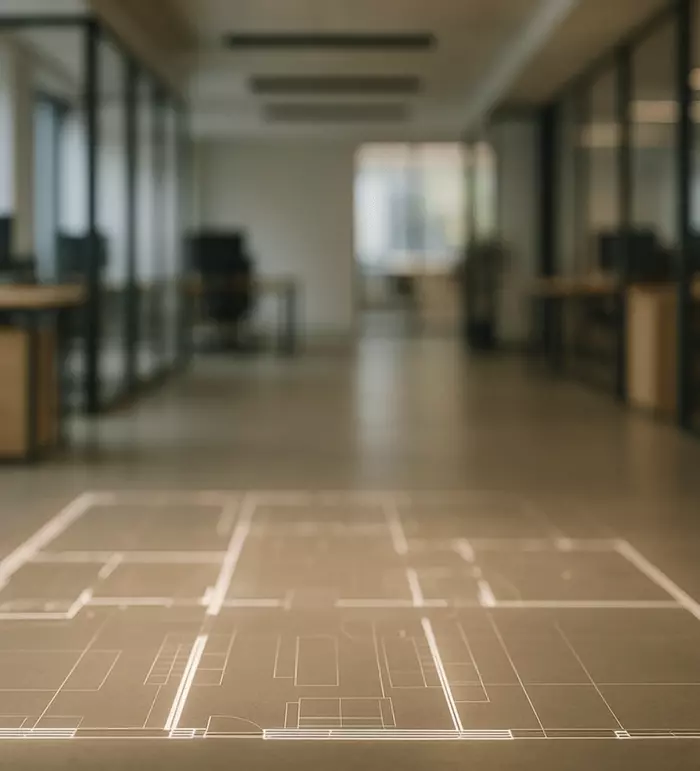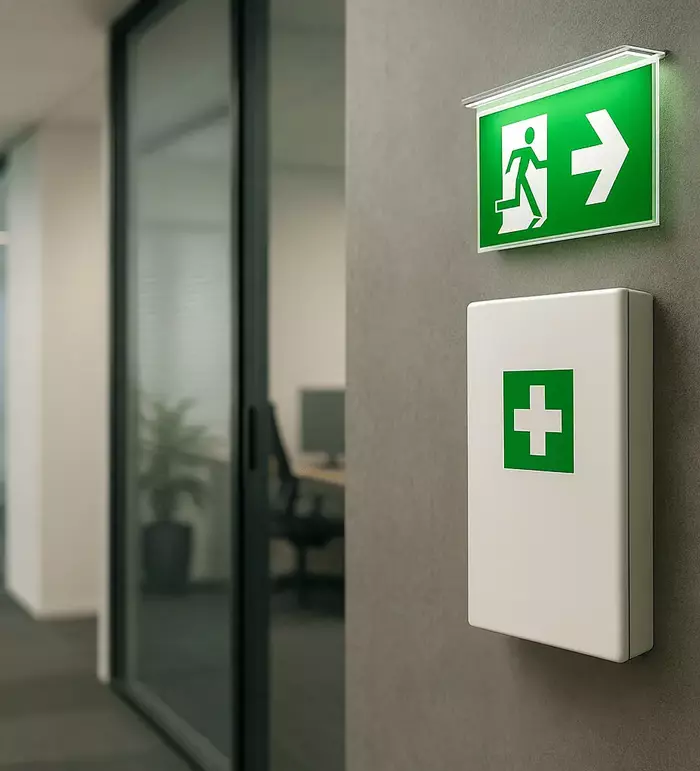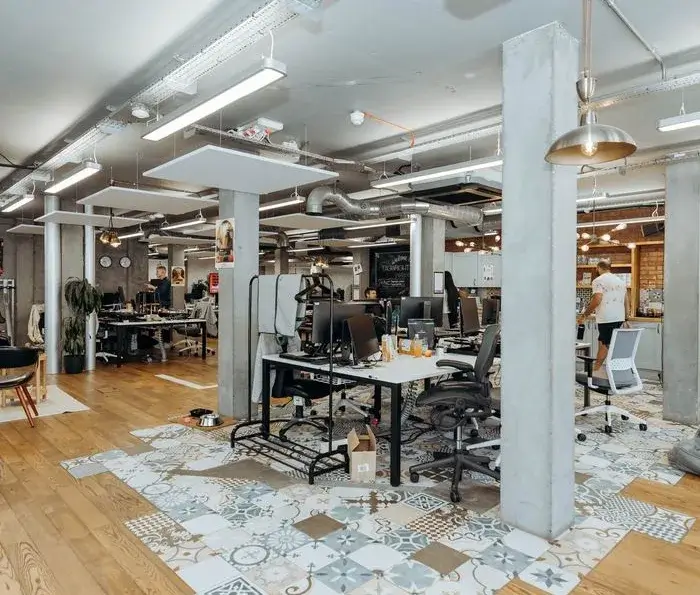Carrying on in our Workspace design trends series, welcome to part three: biophilic design.
Over the last couple of blog posts we’ve explored workplace design from the cubicle to SMART buildings and how workspace has changed overtime.
In terms of workplace design, COVID-19 has made one thing clear. The offices that survive will be those that evolve to be greener, and more sustainable.
According to business investors KPMG, 69% of millennials would trade other benefits for a better workplace. Often, it seems a ‘better’ workplace is a greener one.
In this week’s post, we want to better understand biophilic designs. What are they? Why are they so essential in the future of the office?
If the Pandemic has taught us anything, it’s that investing in making your office a healthier, greener space is not a fad. It’s a serious game changer for our economy and the future of business.
What is biophilia?
The Cambridge Dictionary defines biophilia as “the inborn affinity human beings have for other forms of life.”

Biophilic designs are those that implement alternate lighting, water features and plants in the workplace.
In the office, biophilic designs make greater use and reap the benefits of:
Natural light:
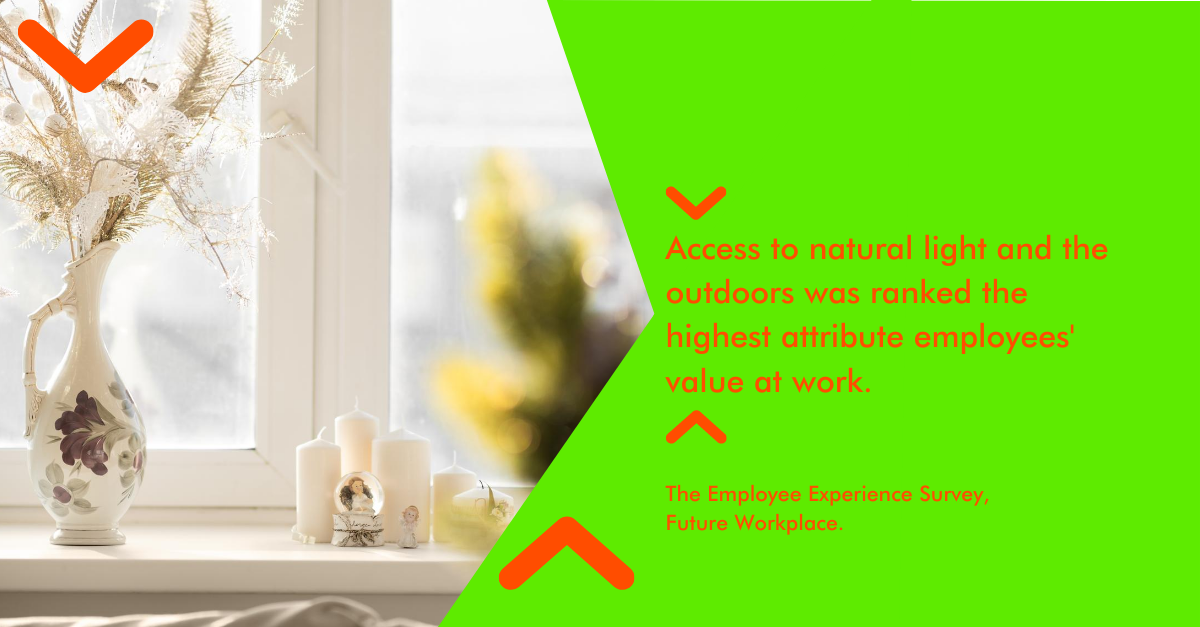
Scientifically, exposure to natural light is proven to increase the hormone melatonin that regulates the circadian rhythm (our sleep-wake cycles). In a survey called ‘The Employee Experience’ conducted by HR Firm Future Workplace, access to natural light and the outdoors was ranked the highest attribute employees’ value at work.
Air and plants:
Plants increase the oxygen levels in the air and absorb carbon dioxide, while also absorbing pollutants and airborne microbes (awful things like mould and bacteria). Plus, they humanise the workplace. Managing Director at Gensler, an architecture firm Philippe Pare explains,
“Some offices can feel quite stark and sterile, but if you add other layers, such as plants, it feels more human and more relatable at a primary, sensory level.”
Workspace furniture and layout:
Workspaces will be split into different zones where light, heating, and temperature can be adapted to different user’s needs. Peter Fisher, Director at Bennetts Associates Architects anticipates offices with varying ceiling heights, paint tones, air, lighting, and temperature levels. SMART buildings are where we see biophilic designs used to their full potential.
The serviced office industry is responding to a market increasingly concerned with workspace’s light and air quality.
There are numerous studies that back up the profound impact biophilia has on the workplace. The Global Impact of Biophilic Design in the Workplace Report, for example, points to the 15% higher level of wellbeing reported in workplaces that incorporate natural elements.
Biophilic workplaces boost wellness
The truth is, biophilic designs have many scientific benefits. And many psychological ones too.
As Gensler’s Managing Director Philippe Pare explains:
“Quite a few studies show how a proximity to nature helps you foster a more positive outlook. If you ask someone to give you an image of something inspiring, nine out of ten people will show you a landscape, so there’s something innate in nature that equals happiness.”
There are three main ways biophilia increases your employees’ wellbeing:
1. Biophilia boosts mental health:

The Global Impact Report found that 88% of employees benefited from having views and access to natural elements indoors improved their sense of wellbeing and reduced stress, whilst 75% said the building’s design enhanced their human connection to their colleagues and reduced feelings of isolation.
2. Biophilic design gives employees a sense of control over their working environment:
In an increasingly flexible working world, employees are hungry for a sense of control over their working environment. Biophilic designs enable the user to vary the temperature and lighting, vary paint tones, ceiling heights, and furniture. Being involved in these elements, being privy to controlling your working environment boosts worker’s satisfaction.
3. Biophilia boosts productivity
This relates in part to new research around ‘presenteeism’. Presenteeism is the act of turning up at work while ill or displaying low productivity levels at work even when healthy.
According to the Global Impact Report, presenteeism costs UK businesses one billion pounds per year. Tackling presenteeism by taking measures - like implementing biophilic workplace design - is becoming an increasingly pressing and effective resolution.

The Global Report found that 67% of respondents worldwide experience a boost in mood and productivity when office environments are decorated in earth tones such as yellow, green, brown or blue.
Our own research suggests that a lack of breakout space can have on worker’s productivity. Almost a third of Londoners don’t find the time to take a proper lunch break and eat at their desk, resulting in 22% of respondents reporting feeling mentally drained.
Biophilic design at work can tackle these feelings and ultimately boost wellness and work efficiency.
Biophilic workplaces are a strategic business lever
Biophilic design takes the productive and motivating potential that workspace is capable of and pushes it further.
How does this impact the bottom line?
Biophilic designs are economically and environmentally sustainable:
Centralising heating, automating lights and air conditioning - as biophilic designs in SMART buildings do - will save the tenant and the economy money in the long run. According to American Council for Energy-Efficient Economy (ACEEE), this is already happening.
Low Carbon Workspace, fund manager Threadneedle Investments and Property Developer, Stanhope, have collaborated to make nine commercial buildings in London more energy efficient. Thus far, they have saved £100,000 and sent this to conservation charities.
Biophilic designs can increase retention rates:
Ok, we’re not trying to suggest that biophilia alone guarantees increased employee retention rates. However, improving office environments has been proved to boost employee loyalty by 53% and reduce the costly issue of presenteeism.
Steve Taylor, Project Director at office design consultancy Peldon Rose describes how SMART working zones allow:
“Everyone can visually connect and enable natural light to flood across the office; all crucial in helping enhance productivity and collaboration.”
There is a clear correlation between employee happiness and retention that biophilic and SMART designs are positively contributing towards.
Biophilia supports brand awareness and values:
Brand helps businesses differentiate the how and why you do what you do. Lloyd Coldrick, Managing Director at Colbus interior designs explains:
“It’s important that a company’s character and personality match exactly what they want them to feel, and the health and aesthetically pleasing elements of biophilic design mean brand awareness is bolstered.”
Investing in a biophilic workplace says alot about your company culture and your business values.
For its sustainability - both environmental and economical - their positive impact on work wellness and their statement about the fulfilment of branding, biophilia is shaping the workplace itself as something that boosts business.
Our main takeaways (in biodegradable packaging, of course…)
The greener workplace is an all round winner. Biophilic designs:
Are sustainable
Boost happiness
Boost business
Biophilic workspaces are the present and indeed, the future of the office. It isn’t just a fad. Companies can benefit from biophilic designs without the overhead cost when using serviced offices.
Take Citicape House. Currently being constructed in Holborn and set for completion by 2024, the building will capture eight tonnes of carbon and produce six tonnes of oxygen. It has an Urban Green Factor (UGF) of 1.37, exceeding the mandated 0.3 by over 45 times.
If you’re interested in finding out more about how providers are turning their workspaces into living, breathing organisms, get in touch with us.
